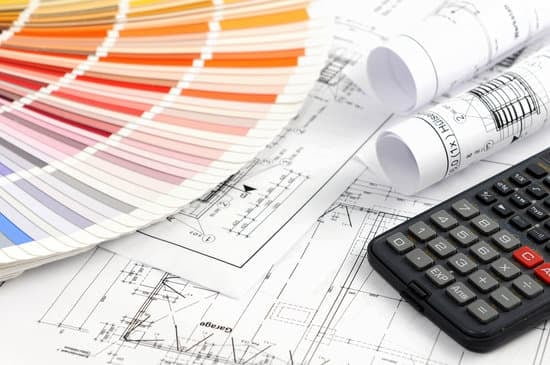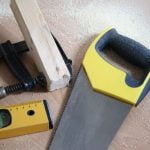Are you considering making updates or renovations to your home but unsure of how to finance the project? A home improvement loan could be the solution you’re looking for. This type of loan is specifically designed to provide homeowners with the funds needed to make improvements and upgrades to their property. Before making a decision, it’s important to understand the purpose and benefits of home improvement loans, as well as the considerations involved in obtaining one.
When deciding whether to get a home improvement loan, it’s essential to assess the specific needs for improvements in your home. From small repairs to major renovations, having a clear understanding of what you want to achieve will help guide you in determining if a loan is necessary and how much funding you may require.
In this article, we’ll explore different types of home improvement loans, weigh the pros and cons of obtaining one, and provide practical tips for assessing your financial needs.
In addition to understanding the purpose behind these loans, it’s crucial to explore the various types available and compare interest rates and terms from different lenders. With careful consideration, you can make an informed decision on whether a home improvement loan is the right choice for you. Throughout this article, we’ll provide valuable insights on how to navigate through this process and make sound financial decisions when it comes to improving your living space.
Assessing the Need for Home Improvements
When considering whether to get a home improvement loan, it’s important to first assess your actual need for home improvements. This can be done by creating a checklist of the areas in your home that require renovation or repairs. By doing so, you can prioritize which projects are most urgent and which ones can wait.
Assessing the Need for Home Improvements Checklist
- Identify areas that pose safety hazards such as faulty electrical wiring, plumbing issues, or structural damage
- Determine if there are any outdated features in your home that need upgrading, such as old appliances, worn-out flooring, or an aging roof
- Evaluate if there are areas where improvements could increase the value of your home, such as renovating the kitchen or adding a bathroom
- Assess if there are any energy efficiency upgrades that could save you money in the long run, such as installing new windows or improving insulation
After completing this checklist, you will have a clear understanding of your specific needs for home improvements and whether obtaining a loan is necessary to achieve these goals. It’s important to prioritize health and safety concerns first before moving onto aesthetic upgrades.
Keep in mind that not all home improvement projects require financing. If you have sufficient savings or can manage smaller repairs within your budget, taking out a loan may not be necessary. However, for larger-scale renovations or upgrades with significant costs, exploring the option of a home improvement loan could be beneficial.
Ultimately, assessing the need for home improvements through this checklist will help you make an informed decision on whether obtaining a loan is the right choice for your situation.
Exploring Different Types of Home Improvement Loans
When considering a home improvement project, you may find that you need additional funding to cover the costs. In such cases, exploring different types of home improvement loans can be a viable option to help finance your project. There are several options available in the market, each with its own set of terms and conditions.
One common type of home improvement loan is a home equity loan or a home equity line of credit (HELOC), which allows homeowners to borrow against the equity in their homes. These loans typically have lower interest rates compared to personal loans or credit cards, and the interest may be tax-deductible.
Another option is a personal loan, which is unsecured and usually has a fixed interest rate. Personal loans are suitable for smaller projects and can be obtained without leveraging your home’s equity.
For homeowners who have little or no equity in their homes, an FHA Title 1 Loan could be beneficial. This type of loan does not require equity and is geared towards financing minor home improvements.
Additionally, energy-efficient mortgages (EEMs) or energy-improvement mortgages (EIMs) are specialized loans for making energy-efficient upgrades to your home, such as installing solar panels or upgrading insulation. Exploring these different types of home improvement loans will help you determine which one best suits your financial needs and project requirements.
Pros and Cons of Obtaining a Home Improvement Loan
When considering whether to obtain a home improvement loan, it is important to weigh the pros and cons of taking on this financial responsibility. Understanding the potential benefits and drawbacks of securing a loan can help homeowners make an informed decision about their renovation plans.
Pros
One of the major advantages of obtaining a home improvement loan is the ability to fund significant renovation projects without having to deplete savings or liquidate other assets. This allows homeowners to make necessary upgrades or repairs while maintaining financial security for unexpected expenses. Additionally, some home improvement loans may offer competitive interest rates, making them a cost-effective option for funding renovations.
Another benefit of obtaining a home improvement loan is the potential to increase the value of the property. By investing in upgrades such as kitchen remodels, bathroom renovations, or energy-efficient improvements, homeowners can enhance the appeal and marketability of their homes. This could result in a higher resale value in the future.
Cons
On the flip side, one of the drawbacks of obtaining a home improvement loan is taking on additional debt. Borrowing money for renovations means committing to regular payments over an extended period of time, which could impact overall financial stability. It is essential for homeowners to carefully assess their current financial situation and ensure they are able to comfortably manage loan repayments.
Another consideration is that not all home improvement loans have favorable terms and conditions. Some lenders may impose strict eligibility criteria or charge high interest rates, making it crucial for borrowers to thoroughly research and compare different loan options before making a decision.
Comparing Interest Rates and Terms From Different Lenders
When considering a home improvement loan, it is important to carefully compare interest rates and terms from different lenders. Home improvement loans are offered by various financial institutions such as banks, credit unions, and online lenders. Each lender will have different terms and conditions that can significantly impact the overall cost of the loan.
To make an informed decision, individuals should consider the following factors when comparing interest rates and terms from different lenders:
- Interest Rates: The interest rate on a home improvement loan can vary widely between lenders. It is essential to shop around and obtain quotes from multiple lenders to find the most competitive rate.
- Loan Fees: In addition to the interest rate, borrowers should also consider any additional fees associated with the loan, such as origination fees or prepayment penalties.
- Repayment Terms: Different lenders may offer varying repayment terms for home improvement loans. Some may offer flexible repayment schedules while others may have fixed monthly payments.
By carefully comparing these factors from different lenders, individuals can ensure that they are obtaining the best possible financing for their home improvement project.
Another important consideration when comparing interest rates and terms is to look beyond just the initial costs. Borrowers should also take into account potential future changes in their financial situation that could affect their ability to repay the loan. Additionally, they should consider how each lender’s customer service reputation might factor into their decision-making process.
Ultimately, comparing interest rates and terms from different lenders is crucial in making an informed decision about whether to get a home improvement loan. By taking the time to research and compare options, individuals can secure a loan that best fits their needs and budget for their home renovation endeavors.
Step-by-Step Guide to Applying for a Home Improvement Loan
When considering a home improvement project, it’s important to determine whether a loan is the right choice for you. If you’ve assessed your needs and decided that taking out a home improvement loan is the best option, here’s a step-by-step guide to help you through the application process.
Research Lenders and Loan Options
The first step in applying for a home improvement loan is to research different lenders and loan options available to you. Take the time to compare interest rates, terms, and any fees associated with each loan. Look for reputable lenders and read reviews from previous customers to ensure you’re choosing a reliable financial institution.
Collect Necessary Documentation
Before applying for a home improvement loan, gather all necessary documentation such as proof of income, employment information, and credit history. Some lenders may also require documentation related to the planned home improvement project, such as cost estimates or contractor quotes.
Complete the Application
Once you’ve chosen a lender and gathered all required documentation, it’s time to complete the application process. Be sure to provide accurate and detailed information about your financial situation and the planned use of funds for your home improvement project.
By following these steps in applying for a home improvement loan, you can ensure that you are well-prepared throughout the process. Each lender will have specific requirements and procedures but being organized with your paperwork will make the process smoother overall. Now that we understand what steps are involved in obtaining a home improvement loan, let’s move on to exploring some financial considerations when budgeting for repayment.
Financial Considerations
When considering whether to get a home improvement loan, one of the most important financial considerations is budgeting for repayment. Taking out a loan for home improvements means taking on additional monthly expenses, so it’s crucial to carefully assess your financial situation before making a decision.
First, take stock of your current income and expenses to determine how much you can realistically afford to allocate towards loan repayment each month. This will help you understand the maximum loan amount you should consider. It’s also important to think about any future changes in your finances, such as potential salary increases or decreases, that could affect your ability to make loan payments.
In addition to budgeting for repayment, it’s essential to compare interest rates and terms from different lenders to find the most favorable loan option. The interest rate on a home improvement loan can significantly impact the total cost of the project, so be sure to shop around and consider multiple lenders before making a decision. Additionally, pay attention to any associated fees or charges that may be applicable when obtaining the loan.
Finally, consider how getting a home improvement loan will impact your overall financial goals and stability. Will taking on additional debt affect your ability to save for other long-term objectives, such as retirement or education expenses? Understanding the full scope of financial implications should i get home improvement loan of obtaining a home improvement loan will help you make an informed decision that aligns with your overall financial well-being.
| Financial Considerations | Budgeting for Repayment |
|---|---|
| Assess current income and expenses | Determine maximum affordable loan amount |
| Compare interest rates and terms from different lenders | Shop around for most favorable loan option |
| Consider overall financial goals and stability | Evaluate impact on long-term objectives and financial well-being |
Case Studies
When it comes to making home improvements, many homeowners find themselves considering whether a home improvement loan is the right option for them. One of the most common reasons people consider getting a home improvement loan is to fund major renovations or repairs that are beyond their current budget. A home improvement loan can provide the necessary funds to make these improvements without having to deplete savings or use high-interest credit cards.
One real-life example of a successful home improvement project with a loan is the Smith family, who wanted to renovate their outdated kitchen. They decided to obtain a home improvement loan to cover the cost of new appliances, countertops, and flooring.
With the help of the loan, they were able to complete the renovation quickly and efficiently, increasing the value of their home in the process. The fixed interest rate on their loan made it easier for them to budget for monthly repayments without any unexpected increases in payments.
In another case, the Johnsons used a home improvement loan to add an extension to their home. The additional space allowed them to accommodate their growing family without having to go through the stress and expenses of moving. With competitive interest rates and manageable monthly payments, they were able to enjoy their newly improved home while spreading out the cost over time.
| Clients | Home Improvement Project | Loan Type |
|---|---|---|
| Smith Family | Kitchen Renovation | Fixed-rate Home Improvement Loan |
| Johnson Family | Home Extension | Competitive Interest Rate Home Improvement Loan |
These real-life examples demonstrate how a well-structured and affordable home improvement loan can make it possible for homeowners to make significant upgrades without draining their savings or accruing high-interest debt. Whether it’s remodeling a kitchen, adding an extra bedroom, or enhancing curb appeal with landscaping projects, obtaining a home improvement loan has helped numerous families achieve their vision for their homes while managing costs effectively.
Conclusion
In conclusion, deciding whether to get a home improvement loan is a significant financial decision that requires careful consideration. Home improvement loans can be a practical solution for funding important renovation projects and increasing the value of your property. However, before committing to a loan, it is essential to assess the need for home improvements and explore the various types of loans available.
When contemplating whether to obtain a home improvement loan, individuals should carefully weigh the pros and cons. While these loans can provide the necessary funds for renovations, they also come with potential drawbacks such as high-interest rates and fees. Therefore, it is crucial to thoroughly research and compare interest rates and terms from different lenders to ensure that you are getting the best deal possible.
Additionally, budgeting for repayment is an important financial consideration when contemplating a home improvement loan. It is imperative to realistically assess your ability to meet the monthly payments without causing financial strain. By carefully considering all these factors, individuals can make an informed decision on whether obtaining a home improvement loan is the right choice for their specific circumstances.
Frequently Asked Questions
Are Renovation Loans a Good Idea?
Renovation loans can be a good idea for homeowners who need to fund major home improvement projects but don’t have the cash on hand. These loans can provide the necessary funds to make necessary upgrades and improvements.
Is It Better to Pay Cash or Finance Home Improvements?
Whether it’s better to pay cash or finance home improvements depends on your financial situation and the cost of the renovation. If you have the cash available, paying upfront can save you on interest payments. However, financing can make larger projects more manageable.
What Is the Minimum Credit Score for a Home Improvement Loan?
The minimum credit score for a home improvement loan can vary depending on the lender and the type of loan you’re applying for. Generally, a credit score of 620 or higher is considered acceptable for many home improvement loans, but some lenders may require a higher score.

I’m thrilled to have you here as a part of the Remodeling Top community. This is where my journey as an architect and remodeling enthusiast intersects with your passion for transforming houses into dream homes.





